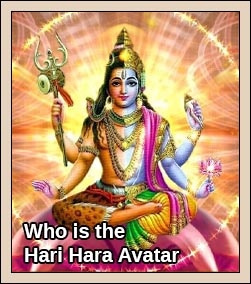The Sri Damodar temple is situated at Zambaulim, about 22 kms from Margao and 5 km. from Quepem, in Goa. There, the serene temple grounds are situated on the banks of the Kushavati River. The Kushavati, also known as the Panti, is understood to have great healing powers and devotees take bath here to cure themselves of bodily ills.
The Damodar deity originally resided in a temple at the exact spot where the Church of Holy Spirit now stands in Modsai-Tembim, Velho Mercado, Margao, also known as Mathagrama (Madgaum). Lord Damodar was moved in 1565 AD to escape the Portuguese inquisition, when the original temple was destroyed and the Church built on its site. Damodara took up residence in the village of Zambaulim, in what was then the Panchamahal district of the Kingdom of Sunda.
The Lord Damodar residing here in Zambaulim is not our Vrindavan lila Damodar Sri Krsna, but rather a Damodar incarnation of Lord Siva. The affiliate Deities in the temple are Sri Ramnath, Sri Mahesha, Sri Chamundeshwari, and Sri Mahakali. Know by the local residents simply as “Dam-bab”, village businessmen have close ties with the Deity and often conduct their business by invoking His blessings. The temple is frequently attended by Hindus and Christians alike. In fact, Catholics are noted for giving high donations to Lord Damodar.
The multi-religious fabric of Goan society is well known for its spirit of sarva dharma sama bhava — equal respect for all religions. Contrary to popular perception, Goa is not a Christian majority state, but rather predominantly Hindu. Hinduism and Christianity account for more than 95% of the population, while Islam, Buddhism and other religions make up the rest.
Goa has long been known as a crossroads for religious harmony. Called the “Rome of the East”, it is populated with famous churches and temples, many of which are attended by the same congregants. While the Portuguese inquisition played havoc on Goan religious culture, little remains of the anger and cultural disdain one might except to find. Rather, many Goans reverently take darshan of the deities of all faiths, not only the one they profess to follow.
Temple Rituals and Festivals
The temple Mahajans are from Kaunsha, Bharadwaj, Kashyapa and Vatsa gotras with Nayak, Shenoy, Pai, Shenvi surnames. The Pallakhi of Sri Damoder is taken on every Monday.
The main yearly festival celebrated at Damodar Temple is the Gulal festival during which, like Holi, coloured red powders are thrown. The Shigmotsava (Shigmo) and Gulal of Zambaulim hold particular significance for the Hindu Saraswat Brahmins. The week long celebration of Shigmotsava is filled with devotional and cultural programs. The annual Jatra is held from Ashwin Poornima to Vadya Chaturthi.
During the Shigmotsava, male devotees smear one another with red gulal (powder), but no colour is sprinkled on females. The men then take bath in the Kushavati, which originates from the Western ghats. Many newlyweds also come to pay their obeisance to Lord Damodar during this festival, seeking his blessing on their married life.












Very Interesting